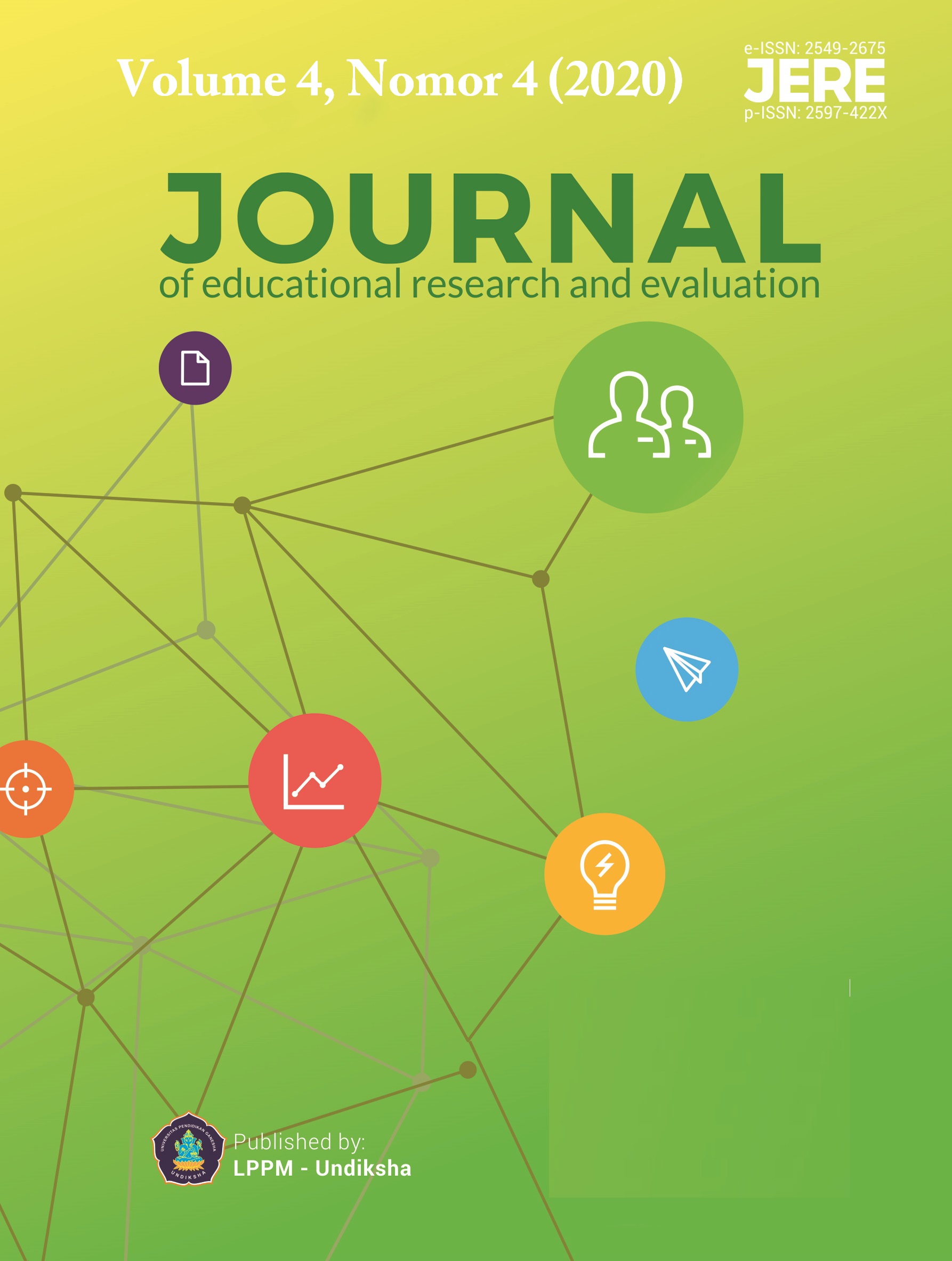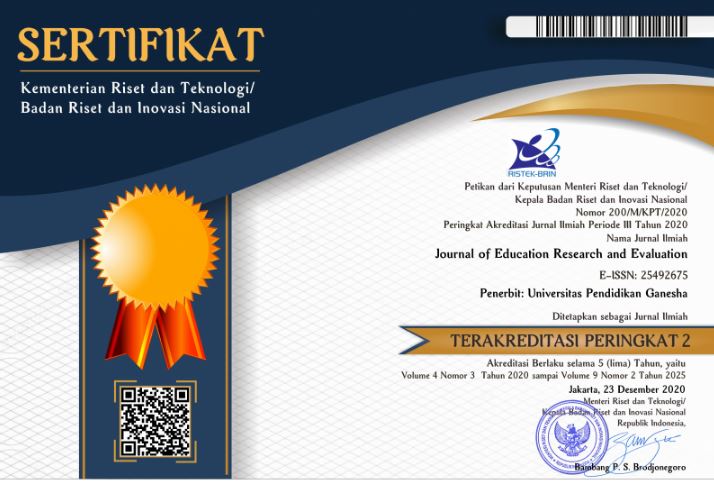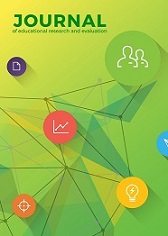Needs Analysis for the Development of a Training Module for Hypercontent Examination Emission Inspection at the Ministry of Transportation
DOI:
https://doi.org/10.23887/jere.v4i4.29550Keywords:
Needs Analysis, Hypercontent Module, EmissionAbstract
The main factor of air pollution in Indonesia is motorized vehicles. Motorized vehicles operating on the road will produce exhaust gas emissions which result in air pollution. In overcoming exhaust gas emissions in vehicles, the Ministry of Transportation conducts training for exhaust emission inspection, and conducts training at one of the technical implementation units, namely the Indonesian Land Transportation Polytechnic (PTDI) STTD. The purpose of this study was to conduct a needs analysis to develop a hyper content learning module for training on exhaust emission examinations, using the R&D (research and Development) method using the Derek Rowntree model. The hyper content module is a module that combines hypertext, hyperlinks, and hypermedia, and the media used in the form of video, QR code, YouTube, and cloud computing. With the development of the hyper content module, it is possible to improve the understanding and learning outcomes of training participants in studying exhaust emissions from vehicles when compared to conventional learning.
References
Amin M, Muslim Suyitno, Wirasti Murti K (2019). Pengembangan Modul Pembelajaran Hypercontent Pengenalan Perangkat Jaringan Komputer Untuk Mahasiswa Asal Daerah 3T. 1(1), 199–204.
Borck, R. (2019). Public transport and urban pollution ☆. Regional Science and Urban Economics, 77(November 2018), 356–366. https://doi.org/10.1016/j.regsciurbeco.2019.06.005
Cetin, M. (2015). The Role of the Chemical Sciences Training on the Emission Control Systems in Vehicles. Education Journal, 4(1), 20. https://doi.org/10.11648/j.edu.20150401.15
Gunawan, S., Hasan, H., Dini, R., & Lubis, W. (2020). Pemanfaatan Adsorben dari Tongkol Jagung sebagai Karbon Aktif untuk Mengurangi Emisi Gas Buang Kendaraan Bermotor. 3(1), 38–47.
Hakim, L., Sitorus, Z., Muzakky, M., & Maududy, A. (2018). Design tool of Motor Vehicle Emissions Measurement Devices with Based on Arduino Nano with Android Smartphone Viewer. 13(6), 3975–3978.
Hidayat Moch. Rizky dan Rusijono. (2020). Pembuatan Animasi 2d Mata Pelajaran Animasi 2d Dan 3d Kelas Xi Multimedia Di Smk Muhammadiyah 2 Taman Moh . Rizqi Hidayat. Teknologi Pendidikan, Fakultas Ilmu Pendidikan, Universitas Negeri Surabaya.
Huang, J., Deng, F., Wu, S., Zhao, Y., Shima, M., Guo, B., … Guo, X. (2016). Acute effects on pulmonary function in young healthy adults exposed to traffic-related air pollution in semi-closed transport hub in Beijing. Environmental Health and Preventive Medicine, 21(5), 312–320. https://doi.org/10.1007/s12199-016-0531-5
Januszewski A. and Molenda M. (2008). Educational Technology. London: Lawrence Erlbaum Associates.
Kusumaningsih, E., Nadiroh, N., & Ibrahim, N. (2019). Module Achievement of 1st Piano Minor Learning Standard Competence Based on Multimedia at the Jakarta Institute of Art. 343(Icas), 199–203. https://doi.org/10.2991/icas-19.2019.41
L., S. J., Ibrahim Nurdin, & Rusmono. (2017). Pengembangan Paket Modul Cetak Mata Pelajaran Pendidikan Agama Kristen SMP Negeri Tidore Kepulauan. Jurnal Teknologi Pendidikan, 19(3), 191–205.
Lau, S. B., Lee, C., & Prasad, Y. (2015). A folksonomy-based lightweight resource annotation metadata schema for personalized hypermedia learning resource delivery. 23(1), 79–105.
Mah, B. Y. (2019). Journal of English Language Teaching A Review on the Application of Blog , Blogger , Widget and Hypertext to Develop a Web-Based Instructional Tool. 54–58. https://doi.org/10.26418/jeltim.v1i2.31505
Manurung, S. R. (2016). Improving the Conceptual Understanding in Kinematics Subject Matter with Hypertext Media Learning and Formal Thinking Ability. 7(9), 91–98.
Miarso, Y. (2016). Menyemai Benih Teknologi Pendidikan. Jakarta: Pranada Media Group.
Muziansyah, D. (2015). Model Emisi Gas Buangan Kendaraan Bermotor Akibat Aktivitas Transportasi ( Studi Kasus : Terminal Pasar Bawah Ramayana Koita Bandar Lampung ) Terminal Pasar Bawah Ramayana yang berada di pusat Kota Bandar Lampung Emisi Gas Buang Kendaraan Bermotor Akibat Aktivitas Transportasi ” dengan studi kasus. 3(1), 57–70.
Nasir, A. R., & Bargstädt, H. J. (2017). An Approach to Develop Video Tutorials for Construction Tasks. Procedia Engineering, 196(June), 1088–1097. https://doi.org/10.1016/j.proeng.2017.08.066
Nurdjanah Nunuj. (2015). Emisi CO2 Akibat Kendaraan Bermotor Di Kota Denpasar CO2 Emissions From Vehicle In Denpasar. Jurnal Penelitian Transportasi Darat, 5(1), 1–14. https://doi.org/10.1016/j.jbankfin.2017.09.006
Perhubungan, K. (2018). Peraturan Menteri Perhubungan Republik Indonesia Nomor PM 63 Tahun 2018 tentang Perubahan atas Peraturan Menteri Perhubungan Nomor KM 84 Tahun 2009 tentang Tata Cara Pemberian Bantuan Pendidikan dan Pelatihan Serta Beasiswa di Bidang Transportasi.
Prawiradilaga, D. S. (2016). Wawasan Teknologi Pendidikan. Jakarta: Prenada Media Group.
Prawiradilaga, D. S., Widyaningrum, R., & Ariani, D. (2017). Prinsip-Prinsip Dasar Pengembangan Modul Berpendekatan Hypercontent. Indonesian Journal of Curriculum and Educational Technology Studies, 5(2), 57–65. https://doi.org/10.15294/ijcets.v5i2.17098
Purwanto, Rahardi A., L. S. (2007). Pengembangan Modul. Depdiknas: Pustekom.
Rocha, H., Ricardo, P., & Pereira, L. (2017). Hyper-linked Communications : WebRTC enabled asynchronous collaboration. 0–6.
Rowntree, D. (1994). Preparing Materials for Open, Distance and Flexible Learning An Action Guide for Teachers and Trainers. London: Kogan Page Limited.
Sabi, H. M., Uzoka, F. E., Langmia, K., & Njeh, F. N. (2016). Conceptualizing a model for adoption of cloud computing in education. International Journal of Information Management, 36(2), 183–191. https://doi.org/10.1016/j.ijinfomgt.2015.11.010
Siang J. L, Ibrahim Nurdin, & Situmorang Robinson. (2019). Development of hypercontent module using jonnuro model learning desain for candidates master guide. International Journal of Recent Technology and Engineering, 8(2 Special Issue 9), 70–78. https://doi.org/10.35940/ijrte.B1016.0982S919
Siddiquah, A., & Salim, Z. (2017). The ICT facilities, skills, usage, and the problems faced by the students of higher education. Eurasia Journal of Mathematics, Science and Technology Education, 13(8), 4987–4994. https://doi.org/10.12973/eurasia.2017.00977a
Situmorang, R., Lagun, J., Ibrahim, N., & Lagunsiang, J. (2019). Development of Collaborative Learning Materials Based on QR Code to Facilitate Learning. 8(6), 85–98.
Smaldino, Sharon E., Lowther , Deborah L., Russel, J. D. . (2012). Instuctional Technology and Media for Learning (Ninth Editon). New Jersey: Pearson Education Inc.
Sugiyono. (2012). Metode Penelitian Kuantitatif, Kualitatif, dan R & D. Bandung: Alfabeta.
Suparman, M. A. (2014). Desain Instruksional Modern. Jakarta: Erlangga.
Thompson, A. R., & Jr, D. J. L. (2016). An Evaluation of Outcomes Following the Replacement of Traditional Histology Laboratories with Self-Study Modules Changes in Technology. 0. https://doi.org/10.1002/ase.1659
Unless, R., Act, P., Rose, W., If, T., & Rose, W. (2016). Reflective Experiential Learning : Using Active Video Watching for Soft Skills Training.
Zhao, T., & Qin, J. (2017). Study on Hypertext Reading in Students’ Autonomous Learning. Journal of Language Teaching and Research, 8(1), 157. https://doi.org/10.17507/jltr.0801.19
Downloads
Published
How to Cite
Issue
Section
License
Authors who publish with the Journal of Evaluation and Research in Education (JERE) agree to the following terms:
- Authors retain copyright and grant the journal the right of first publication with the work simultaneously licensed under a Creative Commons Attribution License (CC BY-SA 4.0) that allows others to share the work with an acknowledgment of the work's authorship and initial publication in this journal.
- Authors are able to enter into separate, additional contractual arrangements for the non-exclusive distribution of the journal's published version of the work (e.g., post it to an institutional repository or publish it in a book), with an acknowledgment of its initial publication in this journal.
- Authors are permitted and encouraged to post their work online (e.g., in institutional repositories or on their website) prior to and during the submission process, as it can lead to productive exchanges, as well as earlier and greater citation of published work. (See The Effect of Open Access)











